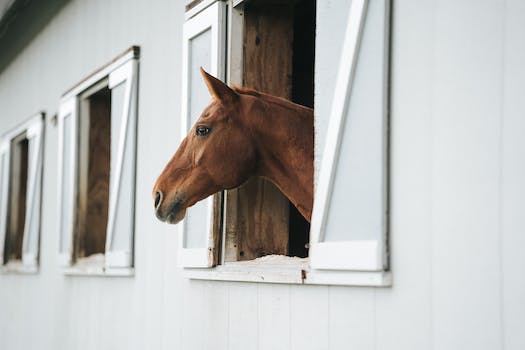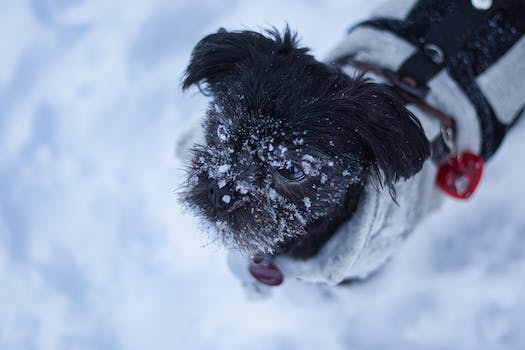“Excellence in Affenpinscher breeding: Setting the standard for health, temperament, and conformation.”
Affenpinscher breeding standards refer to the guidelines and criteria set by kennel clubs and breed organizations to ensure the preservation and improvement of the Affenpinscher breed. These standards outline the desired physical characteristics, temperament, and overall health of the breed, serving as a benchmark for responsible breeders to produce healthy and well-structured Affenpinschers that adhere to the breed’s original purpose and appearance.
History of Affenpinscher Breeding Standards
The history of Affenpinscher breeding standards is a fascinating journey that spans several centuries. These small, wiry-haired dogs have a rich heritage that can be traced back to their origins in Germany. The Affenpinscher, also known as the Monkey Terrier, was initially bred to be a ratter, a dog that could catch and kill rats and other vermin. Over time, however, their role evolved, and they became popular as companion dogs.
In the early days of Affenpinscher breeding, there were no set standards or guidelines for breeding these dogs. Breeders focused primarily on functionality and temperament, rather than adhering to a specific breed standard. As a result, there was a wide variation in the appearance and characteristics of Affenpinschers.
It wasn’t until the late 19th century that efforts were made to establish a breed standard for the Affenpinscher. The first breed club, the Affenpinscher Club of Germany, was formed in 1896, and it played a crucial role in defining the breed’s characteristics. The club’s members worked together to create a standard that would serve as a blueprint for breeding Affenpinschers.
The breed standard outlined the ideal size, appearance, and temperament of the Affenpinscher. According to the standard, the Affenpinscher should be a small, sturdy dog with a dense, wiry coat. They should have a distinctive monkey-like expression, with a short muzzle, dark eyes, and a beard. The standard also emphasized the importance of a lively and confident temperament, as well as a strong, agile body.
The breed standard provided breeders with a clear set of guidelines to follow when breeding Affenpinschers. It helped ensure that the breed’s unique characteristics were preserved and maintained. Breeders began to select dogs for breeding based on how closely they conformed to the breed standard, resulting in a more consistent appearance and temperament among Affenpinschers.
Over the years, the breed standard has been refined and updated to reflect changes in breeding practices and the evolving understanding of the breed. The standard now includes more specific details about the Affenpinscher’s size, proportions, and movement. It also provides guidance on coat color and texture, as well as the correct shape and placement of the ears and tail.
Today, breeders around the world adhere to the established breed standard when breeding Affenpinschers. They carefully select dogs that meet the standard’s criteria, taking into consideration not only their physical attributes but also their temperament and health. This ensures that the breed continues to thrive and maintain its unique characteristics.
In conclusion, the history of Affenpinscher breeding standards is a testament to the dedication and passion of breeders who have worked tirelessly to preserve and improve this beloved breed. The establishment of a breed standard has played a crucial role in shaping the Affenpinscher’s appearance and temperament, ensuring that it remains a distinctive and cherished breed. Thanks to the efforts of breeders, the Affenpinscher continues to bring joy and companionship to countless families around the world.
Importance of Breeding Standards in Affenpinscher Preservation
Breeding standards play a crucial role in the preservation of the Affenpinscher breed. These standards are a set of guidelines that breeders follow to ensure that the dogs they produce meet certain criteria in terms of appearance, temperament, and overall health. By adhering to these standards, breeders can maintain the unique characteristics of the Affenpinscher and prevent the dilution of its genetic heritage.
One of the primary reasons why breeding standards are important is to maintain the distinctive appearance of the Affenpinscher. This breed is known for its shaggy coat, monkey-like face, and wiry texture. These physical traits are what make the Affenpinscher easily recognizable and beloved by enthusiasts. By breeding dogs that conform to these standards, breeders can ensure that future generations of Affenpinschers will continue to possess these unique features.
In addition to appearance, breeding standards also focus on temperament. The Affenpinscher is known for its lively and confident personality. These dogs are often described as being fearless and alert, making them excellent watchdogs. By breeding dogs with the desired temperament, breeders can ensure that the Affenpinscher retains its characteristic traits, making it a suitable companion for those who appreciate its spirited nature.
Health is another crucial aspect of breeding standards. Responsible breeders prioritize the health of their dogs and strive to produce puppies that are free from genetic disorders and hereditary diseases. By conducting health screenings and genetic testing, breeders can identify potential health issues and make informed decisions about which dogs to breed. This helps to reduce the risk of passing on genetic conditions to future generations and ensures that Affenpinschers remain healthy and robust.
Breeding standards also serve to maintain the genetic diversity of the Affenpinscher breed. Genetic diversity is essential for the long-term survival and vitality of any breed. By carefully selecting breeding pairs, breeders can avoid inbreeding and the associated risks of genetic disorders. This helps to maintain a healthy gene pool and ensures that the Affenpinscher remains a resilient and adaptable breed.
Furthermore, breeding standards help to protect the reputation of the Affenpinscher breed. When breeders adhere to these standards, they are demonstrating their commitment to producing high-quality dogs that meet the expectations of potential owners. This helps to build trust and confidence in the breed, as people can be assured that they are getting a genuine Affenpinscher with all the desired traits and characteristics.
In conclusion, breeding standards are of utmost importance in the preservation of the Affenpinscher breed. These standards ensure that the breed’s unique appearance, temperament, and overall health are maintained. By adhering to these guidelines, breeders can produce puppies that possess the desired traits and characteristics, ensuring the continued existence and vitality of the Affenpinscher. Moreover, breeding standards help to protect the reputation of the breed and build trust among potential owners. By following these standards, breeders play a vital role in preserving the Affenpinscher for future generations to enjoy.
Key Characteristics and Traits in Affenpinscher Breeding Standards
The Affenpinscher is a small, sturdy dog with a distinct appearance and a lively personality. When it comes to breeding standards for this breed, there are several key characteristics and traits that breeders should focus on. These standards ensure that the breed remains true to its original purpose and maintains its unique qualities.
One of the most important characteristics in Affenpinscher breeding standards is the dog’s size and structure. The ideal Affenpinscher should be small, standing at around 9 to 11.5 inches at the shoulder. It should have a compact and well-muscled body, giving it a sturdy and balanced appearance. This size and structure allow the Affenpinscher to excel in its role as a companion and watchdog.
Another key characteristic in Affenpinscher breeding standards is the dog’s coat. The Affenpinscher has a dense and wiry coat that requires regular grooming to maintain its appearance. The coat should be harsh and rough to the touch, providing protection from the elements. The color of the coat can vary, but black is the most common. However, other colors such as gray, silver, and red are also acceptable.
In addition to size and coat, the Affenpinscher’s head and facial features are also important in breeding standards. The head should be round and in proportion to the body, giving the dog its distinctive monkey-like appearance. The eyes should be round and dark, expressing a keen and intelligent expression. The ears should be set high on the head and carried erect, adding to the dog’s alert and attentive demeanor.
Temperament is another crucial aspect of Affenpinscher breeding standards. The breed is known for its lively and confident personality, and this should be reflected in the dogs being bred. Affenpinschers should be alert, curious, and fearless, always ready to take on any challenge. They should also be affectionate and loyal to their owners, making them excellent companions.
Health is also a significant consideration in Affenpinscher breeding standards. Responsible breeders should ensure that their dogs are free from any hereditary health issues that may be common in the breed. Regular health screenings and genetic testing can help identify potential problems and prevent them from being passed on to future generations. By prioritizing the health of the breed, breeders can help ensure that Affenpinschers live long and healthy lives.
Lastly, it is important for breeders to consider the overall balance and harmony of the Affenpinscher. The dog should have a well-proportioned body, with all its features fitting together seamlessly. This balance contributes to the breed’s overall appearance and functionality. Breeders should strive to produce Affenpinschers that are not only visually appealing but also physically sound and capable.
In conclusion, Affenpinscher breeding standards encompass several key characteristics and traits that define the breed. These standards ensure that the breed remains true to its original purpose and maintains its unique qualities. From size and coat to head shape and temperament, breeders must carefully consider each aspect to produce healthy and well-balanced Affenpinschers. By adhering to these standards, breeders can help preserve the breed’s legacy and ensure its continued success as a beloved companion and watchdog.
Understanding the Role of Health Testing in Affenpinscher Breeding Standards

Understanding the Role of Health Testing in Affenpinscher Breeding Standards
When it comes to breeding Affenpinschers, health testing plays a crucial role in ensuring the overall well-being of the breed. As responsible breeders, it is our duty to prioritize the health and longevity of these adorable little dogs. In this article, we will delve into the importance of health testing and how it contributes to maintaining high breeding standards for Affenpinschers.
One of the primary reasons why health testing is essential in Affenpinscher breeding is to identify and eliminate potential genetic diseases. Like any other breed, Affenpinschers are prone to certain health conditions that can be passed down from one generation to the next. By conducting health tests, breeders can identify these genetic diseases and make informed decisions about which dogs to breed.
Hip dysplasia is one such genetic condition that affects many dog breeds, including Affenpinschers. This condition occurs when the hip joint does not develop properly, leading to pain and mobility issues. Through hip dysplasia testing, breeders can identify dogs with healthy hips and ensure that they are not passing on this condition to their offspring.
Another common health issue in Affenpinschers is patellar luxation, which is the dislocation of the kneecap. This condition can cause lameness and discomfort in affected dogs. By conducting patellar luxation testing, breeders can identify dogs with stable kneecaps and avoid breeding those with the condition, thus reducing the risk of passing it on to future generations.
Eye diseases are also a concern in Affenpinschers, with conditions such as progressive retinal atrophy (PRA) and cataracts being prevalent. PRA is a degenerative disease that leads to vision loss, while cataracts cause clouding of the lens. Regular eye examinations and genetic testing can help breeders identify dogs that are clear of these conditions, ensuring that their offspring have a lower risk of developing them.
In addition to genetic diseases, health testing also helps identify other health issues that may not be hereditary but can still impact the overall well-being of Affenpinschers. For example, heart conditions such as mitral valve disease can be detected through cardiac exams. Breeders can then make informed decisions about breeding dogs with healthy hearts, reducing the risk of passing on these conditions.
It is important to note that health testing should not be seen as a guarantee that a dog will never develop any health issues. However, it significantly reduces the risk of passing on genetic diseases and allows breeders to make informed decisions to improve the overall health of the breed.
As responsible breeders, we have a duty to prioritize the health and well-being of our Affenpinschers. By conducting thorough health testing, we can identify and eliminate potential genetic diseases, reducing the risk of passing them on to future generations. This not only ensures the longevity of the breed but also contributes to maintaining high breeding standards.
In conclusion, health testing plays a vital role in Affenpinscher breeding standards. It helps identify and eliminate genetic diseases, such as hip dysplasia, patellar luxation, and eye diseases, that can be passed down from one generation to the next. Additionally, health testing allows breeders to identify other health issues that may impact the overall well-being of Affenpinschers. By prioritizing health testing, we can ensure that our beloved Affenpinschers are healthy and thriving for years to come.
Ethical Considerations in Affenpinscher Breeding Standards
When it comes to breeding Affenpinschers, there are several ethical considerations that breeders must take into account. These considerations ensure that the breed remains healthy and that the puppies are well-cared for. In this article, we will explore some of the key ethical considerations in Affenpinscher breeding standards.
One of the most important ethical considerations is the health of the breeding dogs. Responsible breeders will only breed dogs that are free from genetic diseases and health issues. This means conducting thorough health screenings and tests to ensure that the breeding dogs are in good health. By doing so, breeders can help prevent the passing on of genetic diseases to future generations.
Another ethical consideration is the temperament of the breeding dogs. Affenpinschers are known for their lively and affectionate nature, and it is important to breed dogs with stable and friendly temperaments. This helps ensure that the puppies will have similar temperaments and will be well-suited to family life. Breeders should carefully select dogs with good temperaments to maintain the breed’s positive characteristics.
In addition to health and temperament, responsible breeders also consider the physical characteristics of the Affenpinscher. The breed has a distinct appearance, with a shaggy coat and a monkey-like face. Breeders should strive to maintain these characteristics while also ensuring that the dogs are structurally sound. This means breeding dogs with correct conformation and avoiding any exaggerated features that could lead to health problems.
Ethical breeders also prioritize the well-being of the puppies. They provide a clean and safe environment for the puppies to grow and develop. Puppies should be socialized from an early age, exposed to different people, animals, and environments to help them become well-adjusted adults. Breeders should also provide proper veterinary care, including vaccinations and deworming, to ensure the puppies’ health.
Another important ethical consideration is responsible breeding practices. Breeders should not overbreed their dogs, as this can lead to health problems and decrease the overall quality of the breed. They should also avoid breeding dogs that are too closely related, as this can increase the risk of genetic diseases. Responsible breeders carefully plan their breedings, taking into account the health, temperament, and physical characteristics of the dogs involved.
Ethical breeders also prioritize finding suitable homes for their puppies. They carefully screen potential buyers to ensure that the puppies will be well-cared for and loved. They provide support and guidance to new owners, offering advice on training, grooming, and general care. Responsible breeders also have a policy in place to take back any puppies that are no longer wanted or cannot be cared for.
In conclusion, ethical considerations play a crucial role in Affenpinscher breeding standards. Breeders must prioritize the health and temperament of the breeding dogs, as well as the well-being of the puppies. They should strive to maintain the breed’s physical characteristics while also ensuring that the dogs are structurally sound. Responsible breeding practices and finding suitable homes for the puppies are also important ethical considerations. By adhering to these standards, breeders can help ensure the continued health and well-being of the Affenpinscher breed.
Breeding Practices to Improve Affenpinscher Temperament and Behavior
The Affenpinscher is a small, lively dog breed known for its mischievous personality and distinctive monkey-like appearance. While these dogs are often adored for their playful nature, it is important to ensure that their temperament and behavior are well-balanced. This is where breeding practices come into play. By following certain standards and guidelines, breeders can work towards improving the Affenpinscher’s temperament and behavior.
One of the key aspects of breeding for temperament is selecting dogs with desirable traits. Breeders should prioritize dogs that exhibit a friendly and outgoing nature, as well as those that are confident and well-socialized. These traits are essential for an Affenpinscher to be a well-rounded and adaptable companion. By carefully choosing breeding pairs that possess these qualities, breeders can increase the likelihood of producing puppies with a stable temperament.
In addition to selecting dogs with desirable traits, breeders should also consider the importance of early socialization. Exposing puppies to a variety of people, animals, and environments from a young age helps them develop into well-adjusted adults. This can be achieved through controlled interactions and positive experiences. By providing puppies with a solid foundation of socialization, breeders can contribute to the development of Affenpinschers that are confident and comfortable in various situations.
Another important aspect of breeding for temperament is avoiding dogs with aggressive or fearful tendencies. These traits can be detrimental to the overall temperament of the breed and should be carefully screened for. Breeders should thoroughly evaluate the temperament of potential breeding dogs, ensuring that they do not exhibit any signs of aggression or fearfulness. By eliminating dogs with these traits from the breeding pool, breeders can help maintain and improve the Affenpinscher’s overall temperament.
Behavioral issues can also be addressed through breeding practices. For example, breeders can work towards reducing common issues such as excessive barking or separation anxiety. By selecting breeding pairs that have a history of producing puppies with good behavior, breeders can help minimize the occurrence of these issues in future generations. Additionally, providing puppies with a stable and nurturing environment during their early development can also contribute to better behavior as adults.
It is worth noting that breeding for temperament and behavior is a continuous process. It requires ongoing evaluation and improvement. Breeders should stay informed about the latest research and developments in canine behavior and temperament. By staying up to date, breeders can adapt their breeding practices to align with the most current knowledge and understanding of the Affenpinscher breed.
In conclusion, breeding practices play a crucial role in improving the temperament and behavior of Affenpinschers. By selecting dogs with desirable traits, prioritizing early socialization, and avoiding dogs with aggressive or fearful tendencies, breeders can contribute to the development of well-rounded and well-behaved Affenpinschers. Additionally, addressing common behavioral issues through selective breeding and providing a nurturing environment for puppies can further enhance the breed’s overall temperament. It is important for breeders to stay informed and continuously strive for improvement in order to maintain and enhance the Affenpinscher’s reputation as a delightful and well-behaved companion.
The Impact of Breeding Standards on Affenpinscher Coat and Grooming
The Affenpinscher is a small, wiry-haired breed known for its distinctive monkey-like face. One of the key aspects of the Affenpinscher breed is its coat and grooming requirements. Breeding standards play a crucial role in determining the quality and characteristics of the Affenpinscher’s coat.
When it comes to breeding Affenpinschers, coat texture and color are important factors to consider. The breed standard specifies that the coat should be dense, harsh, and wiry in texture. This unique coat texture not only gives the Affenpinscher its signature look but also serves a practical purpose. The dense and wiry coat provides protection against the elements and helps to keep the dog warm in colder climates.
In addition to texture, the breed standard also outlines the acceptable colors for the Affenpinscher’s coat. The most common colors include black, gray, silver, and red. However, it’s worth noting that variations in shades and patterns are also acceptable as long as they adhere to the breed standard. These standards ensure that breeders maintain the desired coat characteristics and prevent any undesirable traits from being passed on to future generations.
Maintaining the Affenpinscher’s coat requires regular grooming. The breed standard provides guidelines on how the coat should be groomed to maintain its desired appearance. The coat should be hand-stripped or plucked rather than clipped, as this helps to preserve the wiry texture. Hand-stripping involves removing dead hairs by hand, which encourages new hair growth and maintains the coat’s natural texture.
Grooming an Affenpinscher can be a time-consuming process, but it is essential for keeping the coat healthy and looking its best. Regular brushing is necessary to prevent matting and tangling, especially in areas with longer hair, such as the beard and eyebrows. Additionally, routine ear cleaning and nail trimming are important aspects of grooming that should not be overlooked.
Breeding standards not only impact the coat and grooming requirements of the Affenpinscher but also play a role in maintaining the overall health and well-being of the breed. Responsible breeders adhere to these standards to ensure that they are producing healthy puppies with the desired traits. By following the breed standard, breeders can help prevent the development of genetic disorders and promote the longevity of the breed.
It’s important to note that breeding standards are not just about physical appearance. They also encompass temperament and behavior traits. The Affenpinscher is known for its lively and confident personality, and breeders strive to maintain these traits through selective breeding. By breeding dogs with desirable temperaments, breeders can ensure that the Affenpinscher remains a friendly and sociable companion.
In conclusion, breeding standards have a significant impact on the coat and grooming requirements of the Affenpinscher. The breed standard outlines the desired coat texture and colors, as well as the grooming techniques necessary to maintain the coat’s appearance. By adhering to these standards, breeders can produce healthy puppies with the desired traits and help preserve the unique characteristics of the Affenpinscher breed.
Evaluating Affenpinscher Breeding Standards: Show vs. Working Lines
When it comes to evaluating Affenpinscher breeding standards, one important distinction to consider is the difference between show lines and working lines. Show lines are bred with the primary goal of producing dogs that excel in the conformation ring, while working lines are bred for their ability to perform specific tasks or jobs. Both types of breeding have their merits, but it’s important for potential owners to understand the differences and choose a line that aligns with their needs and preferences.
Show lines of Affenpinschers are carefully bred to meet the breed standard set by kennel clubs and breed organizations. This means that breeders focus on producing dogs that have the desired physical characteristics, such as a specific coat color and texture, a well-proportioned body, and a distinctive facial expression. Show line Affenpinschers are often bred from champion bloodlines and are meticulously groomed and presented in the conformation ring to showcase their beauty and adherence to the breed standard.
Working lines, on the other hand, prioritize the breed’s original purpose and abilities. These Affenpinschers are bred for their working traits, such as hunting, herding, or guarding. Working line Affenpinschers may not have the same level of emphasis on physical appearance as show lines, but they are bred for their intelligence, trainability, and working instincts. These dogs excel in activities such as obedience, agility, and tracking, and are often used in various working roles.
When evaluating Affenpinscher breeding standards, it’s important to consider the specific traits and characteristics that are important to you as a potential owner. If you are primarily interested in participating in conformation shows and showcasing your dog’s physical beauty, a show line Affenpinscher may be the right choice for you. These dogs are bred to excel in the ring and have the potential to achieve great success in the show world.
On the other hand, if you are looking for a dog that can actively participate in various activities and sports, a working line Affenpinscher may be a better fit. These dogs are bred for their working abilities and have the drive and instincts to excel in tasks such as obedience, agility, and tracking. They are often highly trainable and eager to please, making them a great choice for owners who want a dog that can actively participate in various activities.
It’s worth noting that while show and working lines have their distinct focuses, there can be some overlap between the two. Some breeders may strive to produce Affenpinschers that excel both in the show ring and in working roles. These dogs are often referred to as “dual-purpose” Affenpinschers and can be a great choice for owners who want a well-rounded dog that can succeed in multiple areas.
In conclusion, evaluating Affenpinscher breeding standards involves understanding the differences between show lines and working lines. Show lines prioritize physical appearance and adherence to the breed standard, while working lines focus on working abilities and instincts. Choosing the right line depends on your specific needs and preferences as a potential owner. Whether you’re interested in participating in conformation shows or engaging in various activities and sports, there is an Affenpinscher line that can meet your requirements.
Q&A
1. What are the breeding standards for Affenpinschers?
The breeding standards for Affenpinschers include a small, sturdy build, a dense and wiry coat, a monkey-like expression, and a confident and alert temperament.
2. What is the ideal size for an Affenpinscher?
The ideal size for an Affenpinscher is between 9.5 to 11.5 inches at the shoulder.
3. What type of coat should an Affenpinscher have?
An Affenpinscher should have a dense and wiry coat that is rough to the touch.
4. Are there any specific color requirements for Affenpinschers?
Affenpinschers can come in various colors, including black, black and tan, gray, silver, red, and belge (a mixture of red and black hairs).
5. What is the desired temperament for an Affenpinscher?
An Affenpinscher should have a confident, alert, and affectionate temperament.
6. Are there any health considerations when breeding Affenpinschers?
Yes, breeders should be aware of potential health issues in Affenpinschers, such as hip dysplasia, patellar luxation, and certain eye conditions.
7. Are there any specific breeding restrictions for Affenpinschers?
Breeding restrictions may vary depending on the kennel club or breed organization, but generally, dogs with significant health issues or temperament problems should not be bred.
8. Are there any specific show requirements for Affenpinschers?
Show requirements may vary depending on the kennel club or breed organization, but generally, Affenpinschers should adhere to the breed standard in terms of appearance, temperament, and movement.In conclusion, Affenpinscher breeding standards are guidelines that aim to maintain the desired characteristics and overall health of the breed. These standards cover various aspects such as size, coat, temperament, and overall conformation. Breeders who adhere to these standards help ensure the preservation and improvement of the Affenpinscher breed.



